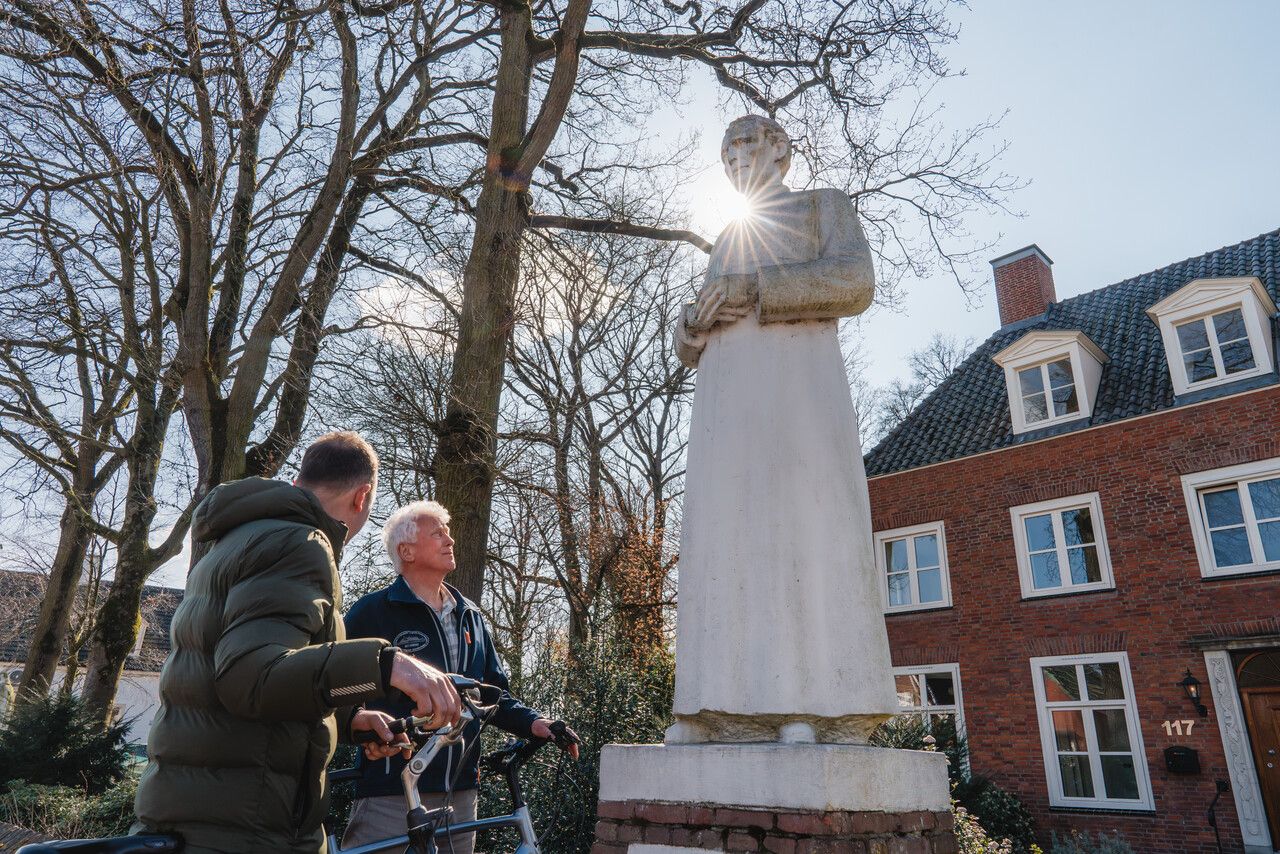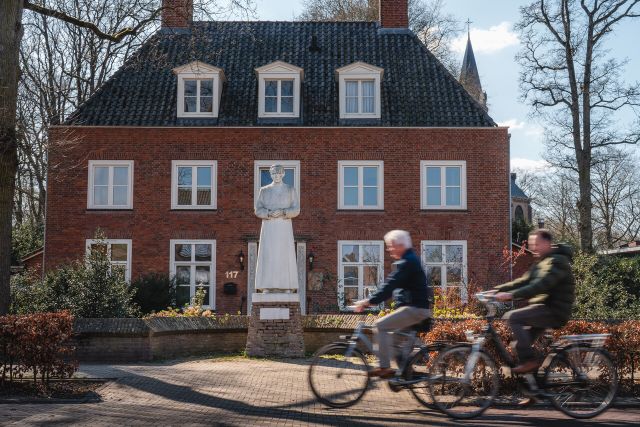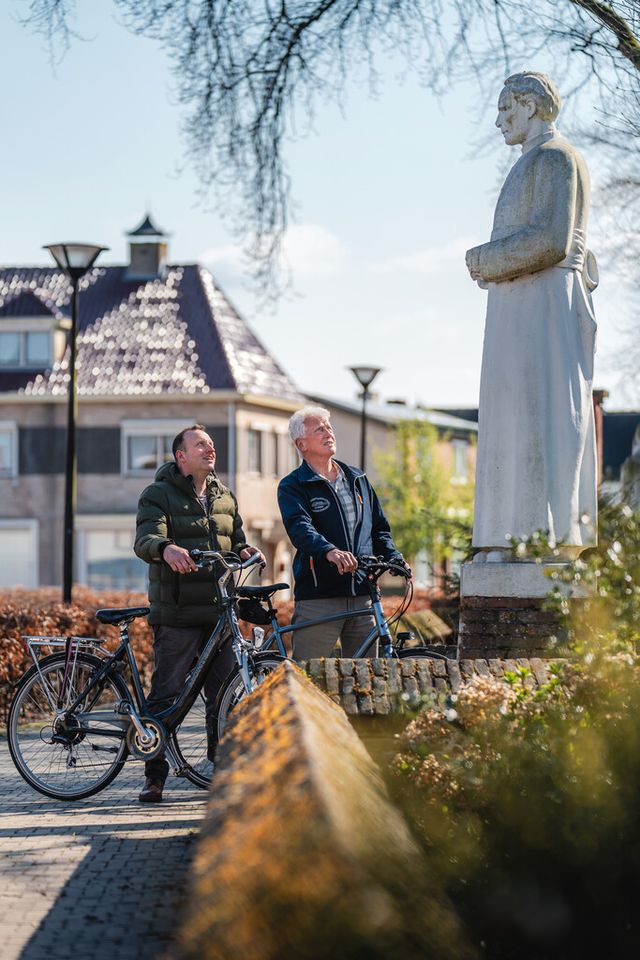Vector: Advance of the Timberwolf division
During the liberation of Sprundel village and St. Willibrord town, a total of 10 soldiers of the US Timberwolves division were killed during heavy fighting at various locations across these areas. German troops tried to slow down the advance of the American forces as much as possible.
During the liberation of Sprundel village and St. Willibrord town, a total of 10 soldiers of the US Timberwolves division were killed during heavy fighting at various locations across these areas. German troops tried to slow down the advance of the American forces as much as possible to give the main German force the opportunity to retreat. In St. Willebrord alone 13 people were killed, including Pastor Petrus Bastiaansen.
Omgangstraat road, Sprundel
At dusk on 28 October 1944, the reconnaissance unit of the Timberwolves left Achtmaal village wit…
During the liberation of Sprundel village and St. Willibrord town, a total of 10 soldiers of the US Timberwolves division were killed during heavy fighting at various locations across these areas. German troops tried to slow down the advance of the American forces as much as possible to give the main German force the opportunity to retreat. In St. Willebrord alone 13 people were killed, including Pastor Petrus Bastiaansen.
Omgangstraat road, Sprundel
At dusk on 28 October 1944, the reconnaissance unit of the Timberwolves left Achtmaal village with seven jeeps, headed for Sprundel in search of enemy forces. In Sprundel, on Omgangstraat road they came across about 60 German soldiers entrenched and hidden behind a roadblock. It was dusk, and the moment the German soldiers saw the American jeeps appear they immediately opened fire. The American soldiers quickly responded by turning their jeeps around, however unfortunately one of the jeeps got stuck. Private Lee Dunlap jumped out of his jeep and attached a rope, pulling the jeep free as bullets flew around their ears. It is thanks to the reconnaissance work of this unit that no other soldiers walked into a possible ambush on their way. Around midnight, the American troops tried to attack the German troops at the roadblock by surrounding them, however they were betrayed by a barking dog and an intense four-hour firefight broke out. Apparently the group had gained enough time because they broke off the fight and retreated toward van Hoeven.
Major Robert Wilson Russi
Major Robert Russi led the advance toward the Dorpsstraat road of St. Willebrord in the early morning of 29 October 1944, himself and his soldiers in search of German snipers. First they entered the church tower, at the top of which was a German officer on lookout. Recognising that his situation was hopeless, the lookout killed himself. Russi then headed toward a house where one or more German soldiers were hiding nearby. Apparently they had seen Russi enter the house, as a few minutes later the house was taken under mortar fire, seriously wounding the Major in the process. His soldiers carried him to the neighbouring café of Jantje Wijnings, where shortly after he died of his wounds, aged only 32 years old.
Pastor Petrus Bastiaansen
All of that morning, Sunday 29 October 1944, shells came down on St Willebrord. Almost all the civilians were in cellars or shelters, anxiously awaiting the end of the German barrage. Between two shellings, Pastor Bastiaansen wanted to take a moment in the rectory garden to tend to his bees to see if they needed anything. Just as he was walking to his hives, he was hit by shrapnel. With no one around to help him, and unable to move himself due to being badly wounded in one arm and one leg, he remained until he was found by soldiers of the Timberwolf division. When the hospital soldiers realised he would not make it, they took him to the Maria Toevlucht Trappist Abbey where, after the Fathers administered the last sacraments to him, he died at the age of 75. In September 1950, parishioners placed a statue of him in front of the rectory.





